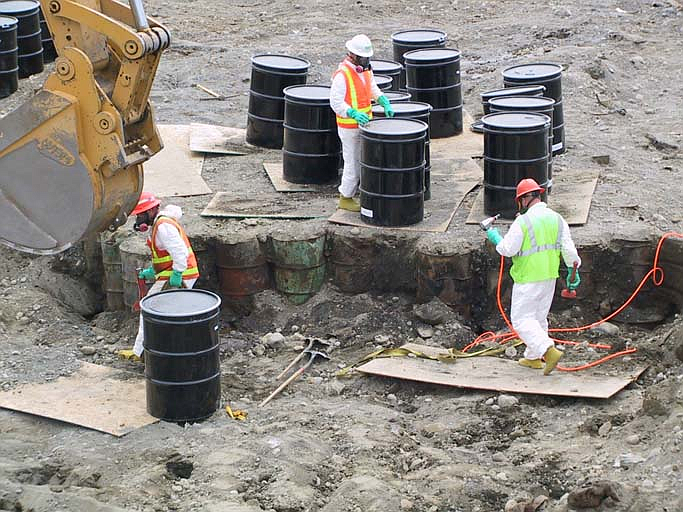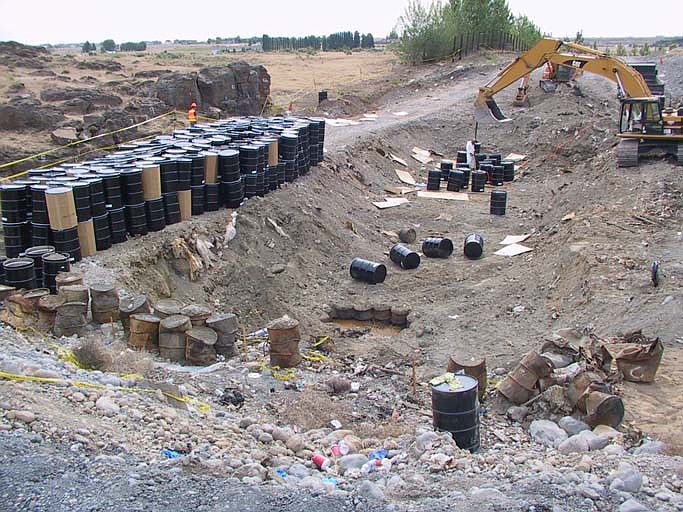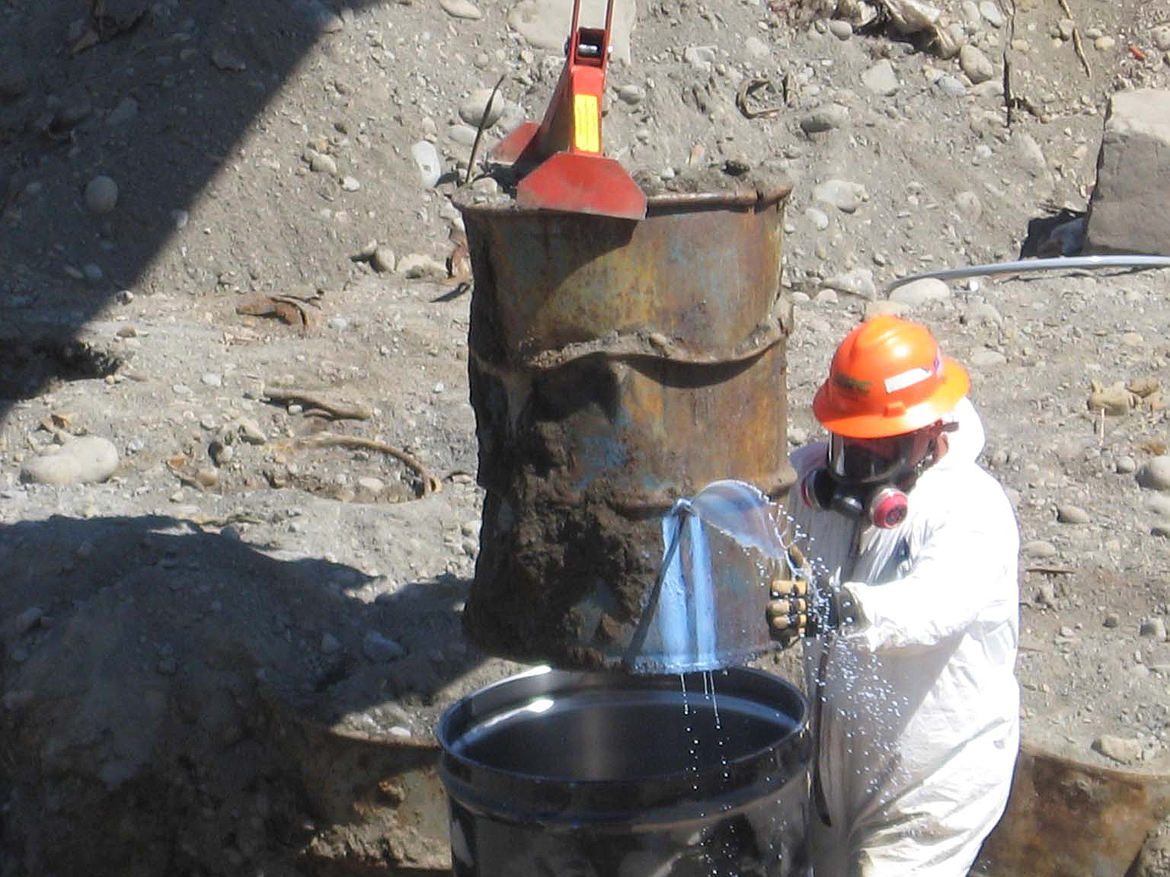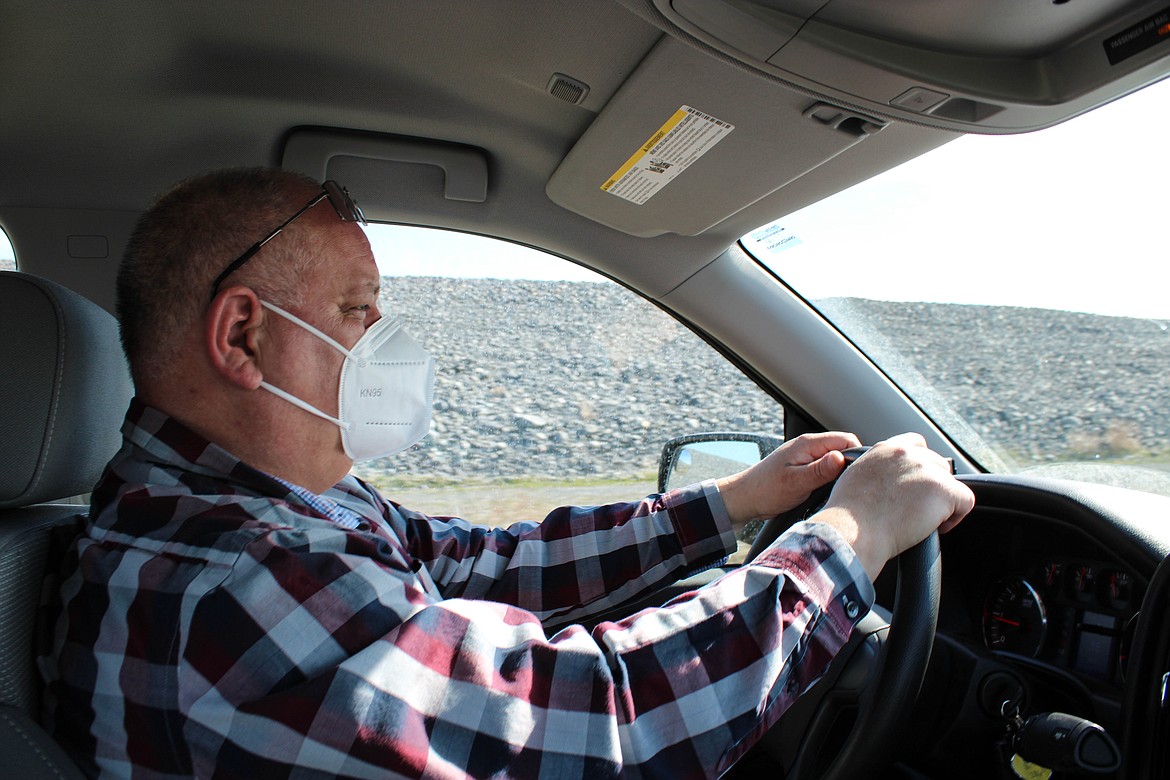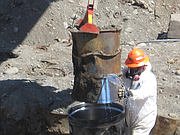A near-century of remediation: Public works haunted by old Grant County landfill
The old Grant County landfill, a chunk of land directly adjacent to the active one and otherwise indistinguishable from the hillside, has been closed to the public since 1974. Much like the active landfill at 3803 Neva Lake Road NW, in Ephrata, the old site requires daily maintenance.
According to Grant County Public Works Director Sam Castro, the end is nowhere in sight, either.
For each cell, or section, of the new landfill, liners were placed to protect the land below it, Castro said. This includes cell three, which is set to be operational within the month, barring permitting delays.
When the old landfill became operational in 1942, this standard was not in place yet, according to the Department of Ecology. The result? Almost a century of remediation work.
“Those of us that are responsible for operating and maintaining it have the responsibility to do so for 30, 40, 50 years beyond the closure,” Castro said. “And the reason for it is to ensure we are not contaminating the earth.”
In 1979, the Environmental Protection Agency added the old landfill to the list of hazardous sites, due to the burial of 2,350 drums of industrial waste four years prior. A 1990 assessment found contaminants from the landfill seeping into the aquifer directly below it.
While the aquifer is not used for drinking water, toxic contamination can still be harmful for the wildlife, land and people around the site, Castro said.
In 2008, a massive process of landfill capping launched, including covering the site with dirt to protect it from rainfall. Without a cap, the water mixes the waste with the ground, creating leachate and permanent ramifications to the soil below, according to the Department of Ecology. At this time, every single toxic drum was dug up and removed from “the hole,” as it’s colloquially referred to.
In 2012, public works staff removed 1,210 cubic yards of contaminated soil.
In 2017, the extraction of 87,000 gallons of groundwater began, including funneling it into an on-site treatment facility and releasing it to evaporate, a process which continues to this day.
Three-quarters of this work was grant-funded by the Department of Ecology because of the Model Toxics Control Act, a 1989 initiative to provide money for toxic cleanups, said eastern region media spokesperson Joye Redfield-Wilder.
Basically, the act puts a wholesale tax on petroleum products, which provides money for cleanup, specifically for such legacy pollution or toxins occurring before modern environmental laws were in place, she said.
The other 25% of the money is split by Grant County and the city of Ephrata, Castro said, as both are listed as Potentially Liable Parties by the Department of Ecology.
The Remedial Action Grant provided $5.2 million for the removal of the barrels alone, Castro said.
“The amount of funding that we’ve received for this cleanup is unprecedented,” he said. “(Officials) don’t know of any other community or operator in this case, Grant County and Ephrata, or any other site that has received so much grant funding for the cleanup, and I’m grateful for that.”
Castro credits earning these funds to the county’s great working relationship with the Department of Ecology, as every project stakeholder genuinely wanted to do the right thing, as well as the incredibly effective and talented project managers, he said.
On an ongoing basis, water samples are collected and treated, Castro said. Methane is also captured and released off site for cleaner air.
And, the old landfill is monitored for settlement, which means organic material beneath the cap is still breaking down and releasing methane on site, he said. Once workers stop recording settlement, the site is no longer releasing toxins.
Since these efforts have been taken, the volatile organic compound concentrations decreased from three million micrograms per cubic meter to 100, according to Department of Ecology data.
“The good news is that we are making so much progress on the cleanup,” Castro said. “It’s taking a lot of effort, I realize that, but at least there’s progress. I would not want to inherit something where we’ve invested all this time and energy and money and we haven’t made any progress.”
This data weighs heavily into the decisions for the future of the new landfill, Castro added.
When acquiring new land for waste, it must be surveyed for endangered plants and animals, as well as valuable archeological artifacts, Castro said. After inquiring about a lot adjacent to the current landfill, they found artifacts leftover from the 20th century and were unable to purchase it.
The current landfill area was chosen for its layer of basalt, Castro said, which helps protect the land from contaminants. It’s important, he said, because any new landfill could fill up in a mere 10 years and require an additional 50 of remediation if the land wasn’t well-protected.
Once the post closure requirements are met on a toxic site, the Department of Ecology issues a No Further Action (NFA) letter, allowing the county to redevelop the land, Redfield-Wilder said.
“It’s to protect human health and the environment, but also to provide an economic benefit to these communities that might be suffering because of these polluted sites,” she said.
For such landfills, these letters are rare, as the source of contamination cannot fully be removed, she said.
The old Grant County landfill currently resides in remedial investigation limbo.
“They have completed several significant interim actions at the site, but they have not decided on a final remedy yet,” Redfield-Wilder said. “It’s a complex site with several aquifers impacted and different flow directions.”
If he ever receives an NFA, Castro predicts it won’t come until 2043, he said, almost 70 years after its closure.
At that time, Castro speculates the land will convert to a new transfer station or recycling facility, he said, which will be less harmful on the environment than a new landfill.
It’s important the public is aware of these concerns, Castro said.
“They are also stakeholders. This is their county,” he said. “They elect the commissioners that are overseeing day-to-day operations of their county, so in my opinion transparency to the public is critical.”



